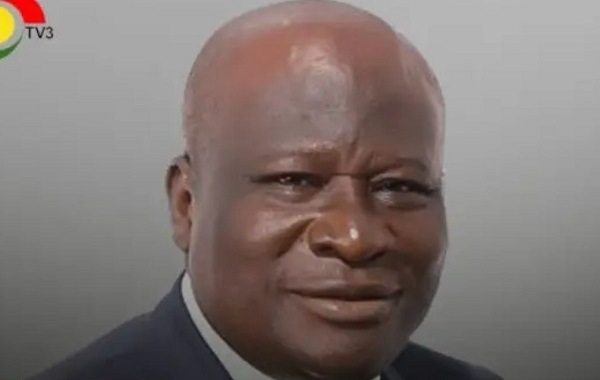Chairman of the Akosombo Dam Spillage Committee, Kirk Koffi, has urged the government to conduct a comprehensive audit to ascertain the damage caused by the spillage in 2023, which displaced over 40,000 people at Mepe in the Volta Region and use it as a guide to compensate victims.
Speaking in an interview with TV3 on May 11, 2025, Koffi outlined the recommendations of the committee intended to prevent a recurrence of the disaster.
He indicated that the issue of compensation came up strongly during their discourse with indigenes and community heads.
The committee has consequently called for a detailed audit to assess the widespread destruction caused to guide the compensation plan.
“During the committee’s discussion with people in the affected communities, the issue of compensation was vehemently reiterated. The committee strongly recommends that the government provide adequate compensation to the affected communities upstream and downstream, which are predominantly made up of farmers, fishermen and businesses.
“This particular recommendation is very pertinent to the people in the affected communities. In addition, the government should audit all damaged properties and loss of livelihoods to enable them to distribute compensation adequately as outlined in the budget of 2025,” the report partly stated.
In a related development, a report by myjoyonline.com on May 11, 2025, has indicated that relevant authorities have developed guidelines for compensation aimed at offering relief to affected families and neighbouring communities.
Below are the recommendations of the committee:
1. Establishing a Controlled Spillage Floodplain:
To minimise the impact of future controlled spillages from the Akosombo Dam, a designated floodplain should be delineated to accommodate spill discharges of up to 497,936cfs (14,100m3/s), i.e., a 1:50-year flood in the short term to medium term in response to climate change uncertainties and 1:100 years, i.e. 540,313cfs (15,300m3/s), in the Long Term. Resilience improvement projects should consider critical public infrastructure upgrades located in the floodplain, e.g., Sogakope bridge, hospitals, etc. A resettlement plan should be considered for all people and properties located in the floodplain. A Legislative Instrument for the downstream floodplain (contour line) is required to prevent inhabitants from settling or building in that floodplain.
2. Enhance Emergency Preparedness:
Establish and regularly update comprehensive disaster preparedness plans locally, referencing the VRA’s Emergency Preparedness Plan (EPP). Simplify the EPP to make it user-friendly by adopting strategies to interpret it in infographics and using local languages in its communication.
3. High Turnover and Divisions Amongst Political Appointees:
Create a collaborative task force comprising MCEs, MPs and stakeholders to focus on disaster preparedness. Implement a conflict resolution process, such as mediation or facilitation, to address disagreements constructively and establish accountability measures, such as public reports on disaster preparedness efforts, to hold leaders responsible for their efforts in disaster management.
4. Improve Communication:
Develop clear communication channels to ensure the timely dissemination of information regarding flood risks and response measures.
5. Resourcing of NADMO and District Assemblies:
Provide adequate funding for district assemblies. In addition, Emergency response centres should be provided with backup systems and stockpiles of essentials to respond to disasters.
6. Lack of Localised Emergency Preparedness Plan in most districts:
Organise regular drills and simulations to practice emergency response procedures secure funding and resources to support developing and implementing localised EPPs and updating Disaster Management Plans.
7. Strengthen Community Engagement:
Improve community education programs and education curricula in schools to raise awareness about future flood risks and the importance of adhering to building regulations in flood- prone areas.
8. Implementing Engineering Solutions for Flood Management:
Engineering solutions can be employed along the downstream catchment area to enhance flood management by improving the capacity to regulate water flow and mitigate the impact of controlled spillages on downstream communities. These solutions can increase water conveyance efficiency and enhance the river system’s ability to accommodate excess water without severe inundation, e.g., Mepe.
9. Delineation of floodplains:
Delineate floodplains by improving vegetative cover with identifiable plantations, i.e., mangrove (downstream), use of concrete pillars or bamboo plantation (upstream & downstream)
10. Safe Havens Management:
Develop multipurpose structures on high grounds that can be used as classrooms or town halls in the affected communities and easily reconfigured as safe havens when needed. Offer psychological support services to help residents cope with the stress of displacement and promote community cohesion. Establish channels for residents to provide feedback on their experience and suggest improvements for the safe haven.
11. Compensation:
During the Committee’s discussion with people in the affected communities, the issue of compensation was vehemently reiterated. The Committee strongly recommends that the government provide adequate compensation to the affected communities upstream and downstream, which are predominantly made up of farmers, fishermen and businesses. This particular recommendation is very pertinent to the people in the affected communities. In addition, the Government should audit all damaged properties and loss of livelihoods to enable them to distribute compensation adequately as outlined in the budget of 2025.
12. Procedure for payment of compensation:
An account should be opened for each affected district, and funds for compensation should be deposited. A “Claims Office” for the disbursement of the funds should also be set up to receive data on the affected flood victims who are eligible for compensation. The Ministry of Finance shall be the supervisory body and shall work with the Member of Parliament (MP) and the District Assembly of the affected community in the disbursement of monies meant for compensation. Third parties such as the Chiefs, Queen mothers and opinion leaders in the affected communities may be needed to confirm certain claims made by the affected people. The signatories to the account are to be the Ministry of Finance and either the MP or the DCE.
VPO/AE
Meanwhile, watch GhanaWeb’s tour of Odweanoma Paragliding Field below:
